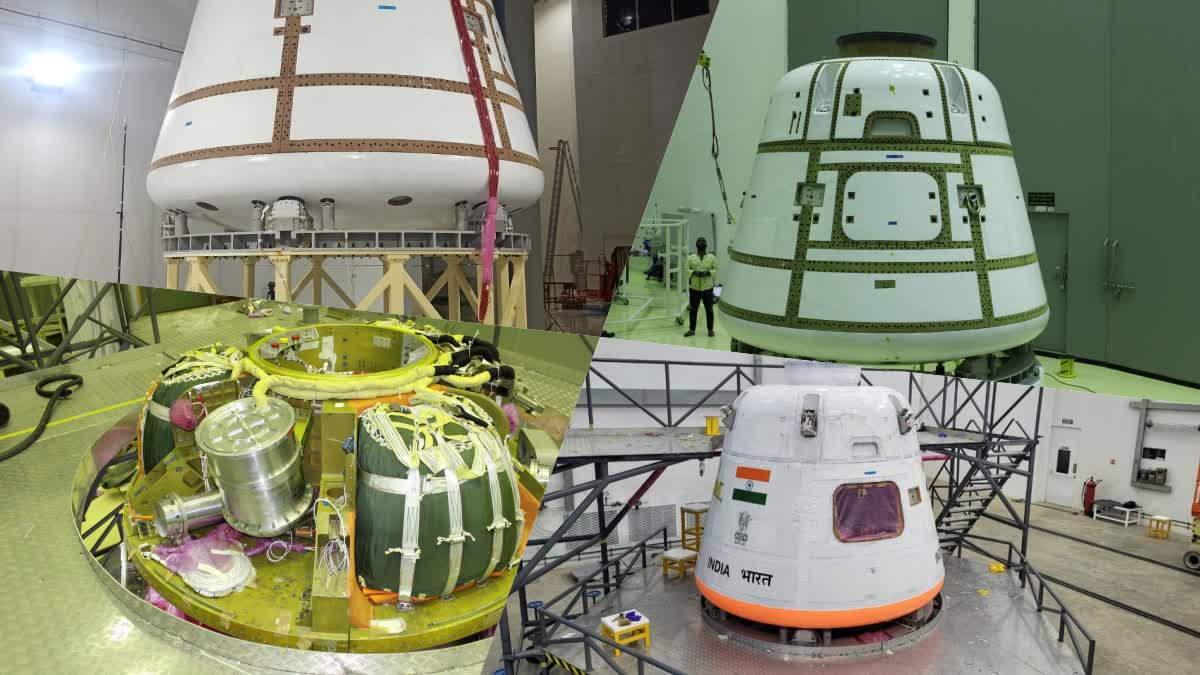Bengaluru: The Indian Space Research Organisation (ISRO) has initiated its preparation for the unmanned flight trials integral to the ambitious Gaganyaan mission, as officially announced by the agency on Saturday.
The ISRO posted the update on its social media page in X. "Mission Gaganyaan: ISRO is set to initiate unmanned flight trials for the Gaganyaan mission. The Flight Test Vehicle Abort Mission-1 (TV-D1) is primed for preparations, showcasing the Crew Escape System's functionality," the ISRO wrote.
-
Mission Gaganyaan:
— ISRO (@isro) October 7, 2023 " class="align-text-top noRightClick twitterSection" data="
ISRO to commence unmanned flight tests for the Gaganyaan mission.
Preparations for the Flight Test Vehicle Abort Mission-1 (TV-D1), which demonstrates the performance of the Crew Escape System, are underway.https://t.co/HSY0qfVDEH @indiannavy #Gaganyaan pic.twitter.com/XszSDEqs7w
">Mission Gaganyaan:
— ISRO (@isro) October 7, 2023
ISRO to commence unmanned flight tests for the Gaganyaan mission.
Preparations for the Flight Test Vehicle Abort Mission-1 (TV-D1), which demonstrates the performance of the Crew Escape System, are underway.https://t.co/HSY0qfVDEH @indiannavy #Gaganyaan pic.twitter.com/XszSDEqs7wMission Gaganyaan:
— ISRO (@isro) October 7, 2023
ISRO to commence unmanned flight tests for the Gaganyaan mission.
Preparations for the Flight Test Vehicle Abort Mission-1 (TV-D1), which demonstrates the performance of the Crew Escape System, are underway.https://t.co/HSY0qfVDEH @indiannavy #Gaganyaan pic.twitter.com/XszSDEqs7w
The space agency said the Crew Module (CM) which is an unpressurised version that has completed its integration and testing and is ready to be shipped to the launch complex.
The CM houses all the systems for the deceleration and recovery. The module has a set of parachutes, recovery aids actuation systems and pyros, on board. The avionics systems used in the module are in a dual redundant mode configuration to ensure navigation, sequencing, telemetry, instrumentation and power. Also, the module is extensively instrumented to capture the flight data for evaluation of the performance of various systems. It will be recovered after touchdown in the Bay of Bengal, using a dedicated vessel and diving team from the Indian Navy.
The milestone paves the way for subsequent qualification assessments and unmanned missions, a crucial stepping stone towards the eagerly awaited inaugural Gaganyaan mission with Indian Astronauts. ISRO revealed in an official release regarding the First Crew Module for the Gaganyaan test flight that the inaugural developmental flight Test Vehicle (TV-D1) is now in its advanced stages of preparation.
The Indian space agency said the Test Vehicle has a single-stage liquid rocket meticulously engineered to test the emergency abort of mission. "Its cargo comprises the CM and Crew Escape Systems (CES) equipped with fast-acting solid motors, accompanied by the CM fairing (CMF) and Interface Adapters. This flight trial aims to replicate the abort scenario during the ascent trajectory, mimicking a Mach number of 1.2 as encountered in the Gaganyaan mission."
To ensure the Crew Module's readiness, it underwent a comprehensive array of electrical tests at ISRO's Bengaluru facility, including an acoustic test. Subsequently, it was dispatched to SDSC-SHAR on August 13, as stated in the official release.
Also read- Amazon launches its first Kuiper satellites to beam affordable Internet



